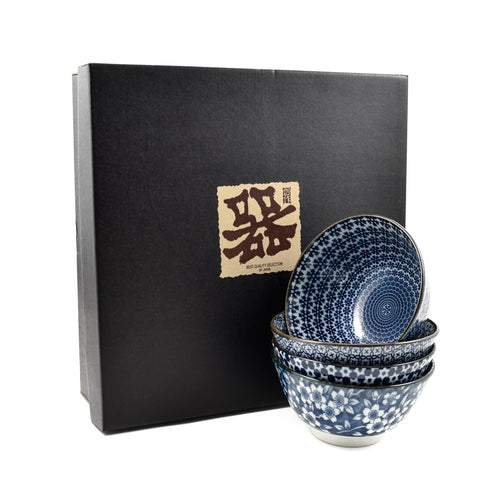
Japanese Tableware
Japanese Gift Sets
Japanese Tea Sets
Sake Sets & Sake Cups
Ramen Bowls
Matcha Bowls
Japanese Bento Box
Chopsticks
Sushi Serving Sets
Japanese Plates
Japanese Bowls
Seikou Kutani-Ware
Cats
-
Business customer? Our trade team is here to help. Learn more >
-
Business customer? Our trade team is here to help. Learn more >
-
Business customer? Our trade team is here to help. Learn more >
Filters
CloseJapanese Tableware
Japanese tableware is designed to be mixed and matched at the table, so you can find it made in an array of colours, patterns and textures. Traditionally specific bowls and dishes are also used to serve specific foods. For example you would have miso soup from soup bowls, ramen from ramen bowls and matcha from matcha tea sets.
Our Japanese tableware range also includes chopsticks, traditional sake sets, striking plates, sauce dishes, soy sauce pouring pots and chopstick rests – so you will have the right tableware to eat authentic Japanese food.
Different Types of Japanese Tableware
Japanese tableware is divided into two main categories: dishes (sara) and bowls (donburi). Dishes are typically used for serving sushi, sashimi, and other seafood, while bowls are used for rice, noodles, soup, and other hot foods. In addition to these two categories, there are also chopsticks (hashi), spoons (sashi), and forks (fōku).
Different Types of Japanese Utensils
Japan has a long history of using chopsticks, and while Western-style silverware has become more popular in recent years, it's still not uncommon to see people eating with chopsticks.
In Japan, people typically use chopsticks when eating rice, noodles, and other delicacies commonly served in bowls. For heartier fare, such as grilled fish or meat, people often switch to Western-style utensils. However, it is considered polite to use chopsticks when dining with new people, no matter what is on the menu.
Materials used in Japanese Tableware
There are multiple different types of material that can be found when looking for Japanese tableware, here are some of the most common;
- Earthenware - a lot of Japanese tableware is made from earthenware or clay as it retains its heat better than porcelain. And since chopsticks are mainly used to eat you don’t need to worry about scratching the bowls.
- Lacquered melamine - you will often find miso soup bowls in restaurants made from lacquered melamine as it's lightweight, easy to clean and very durable.
- Japanese porcelain (also known as Arita-yaki) - Arita-yaki dates back to the 17th century when it was first created in the town of Arita. The porcelain is made from a type of clay found in Korea that was brought over by Korean potters. Arita-yaki is characterised by its white colour and delicate designs.
What are small Japanese bowls called?
There are lots of small Japanese bowls that can be used at meal time. The most commonly used are rice bowls, also known as donburi. Chawan are probably the smallest Japanese bowl that fits in the palm of your hand - they are mainly used for tea but can also be used for small portions of rice. In a traditional Japanese household everyone will have their own set of chopsticks and their own meshiwan (bowl), so when choosing one it is important to consider the size, shape, and colour that will best suit your needs.
Why do Japanese dishes come in sets of five?
In Japan, the number five is considered a lucky number. This is because the pronunciation of the word five in Japanese is similar to that of the word self. The number five also symbolises balance and harmony. For these reasons, it is common to see sets of five dishes in Japanese homes and restaurants.
Different Types of Japanese Tableware
Japanese tableware is divided into two main categories: dishes (sara) and bowls (donburi). Dishes and plates are typically used for serving sushi, sashimi, and other seafood, while bowls are used for rice, noodles, soup, and other hot foods. Many Japanese dishes and bowls are finished with traditional designs such as the Blue Wave pattern. Or you may see common motifs such as cats or fish. The patterns and textures of classic Japanese stoneware dishes often feature shades of grey, black, and green.

























